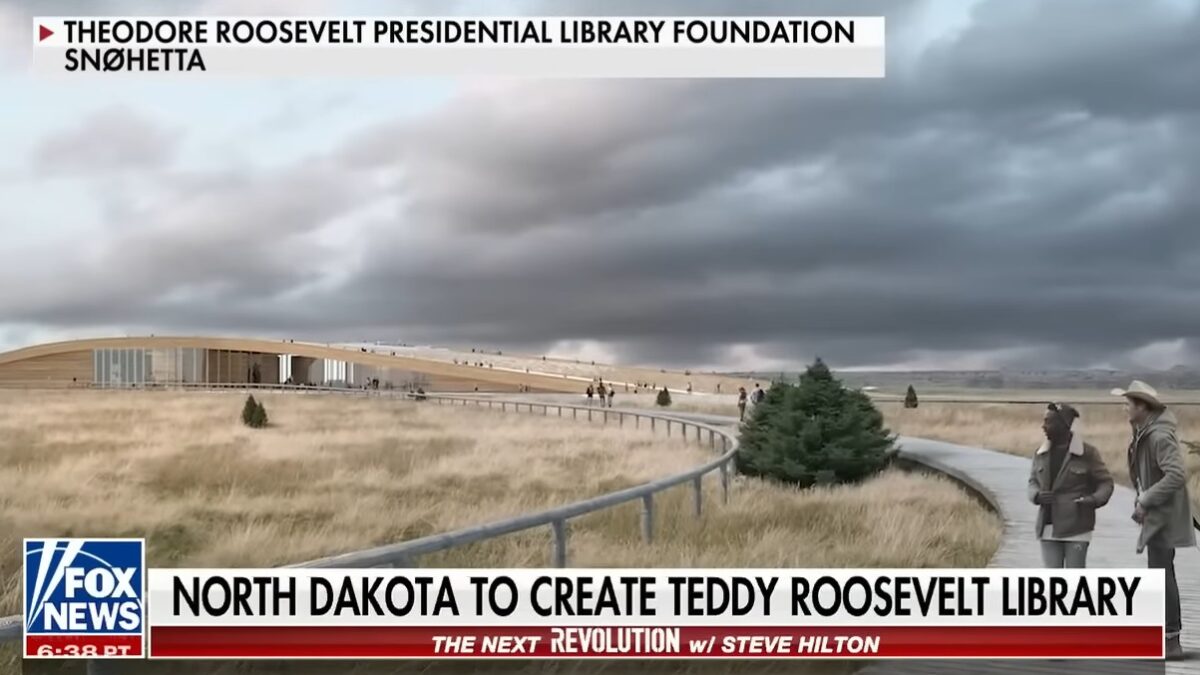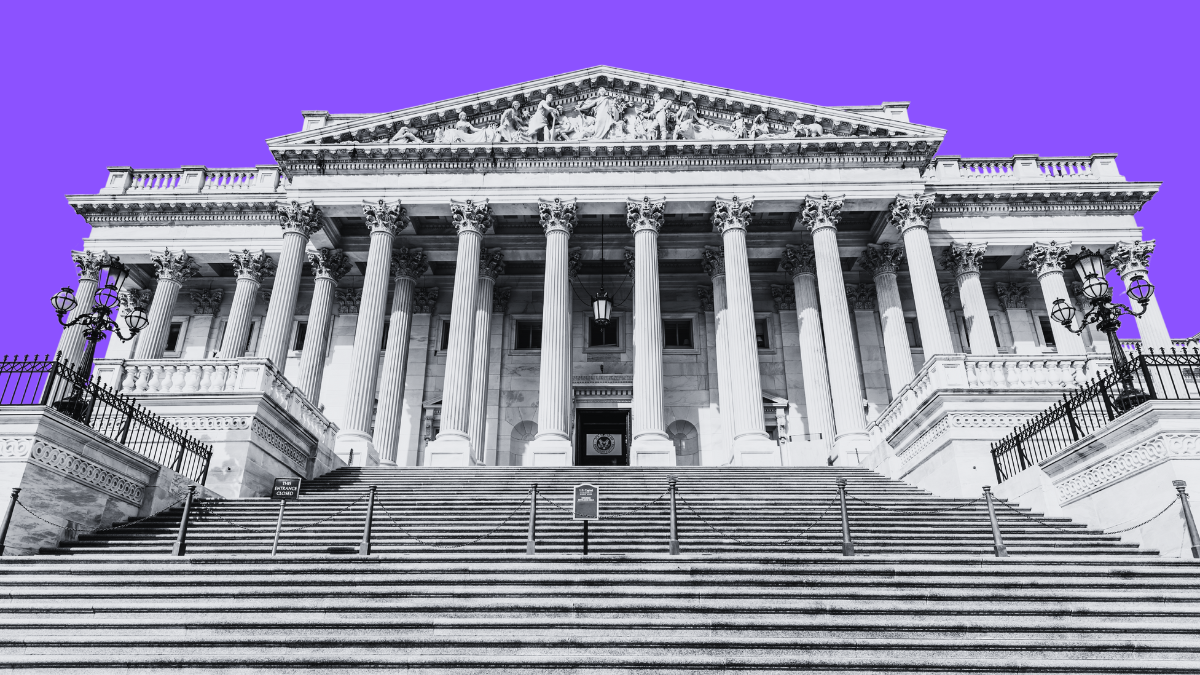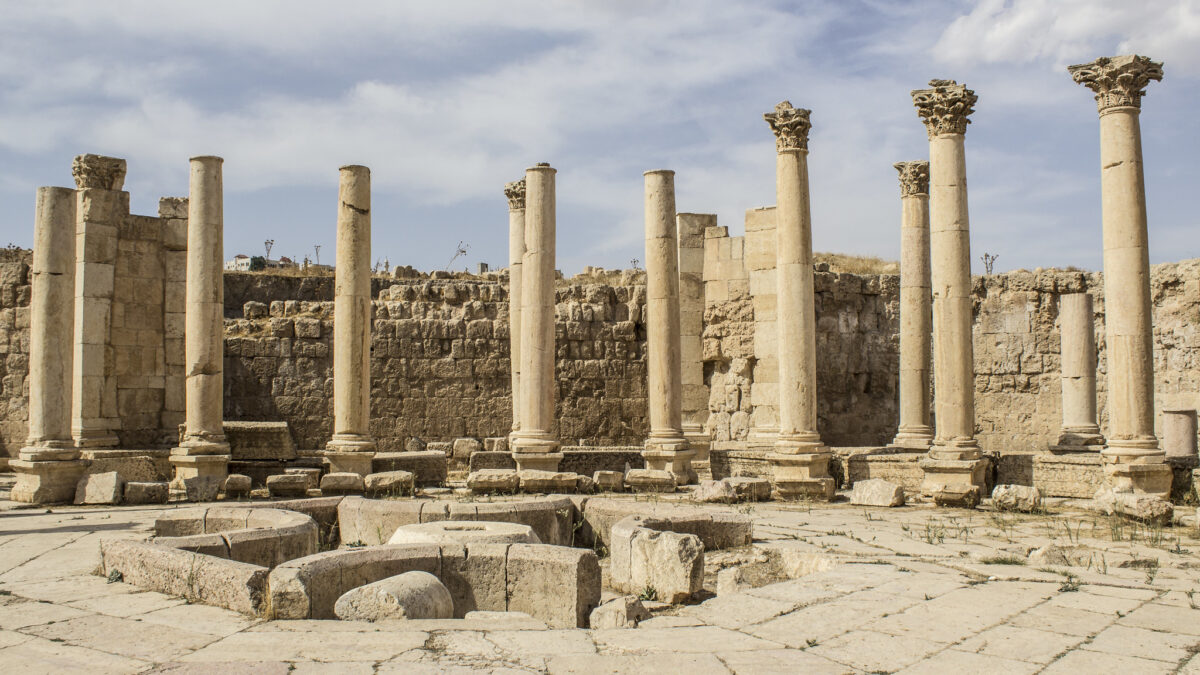More than 100 years after the iconic president’s death, in 2026, the Theodore Roosevelt Presidential Library will be open to the public. It will be the first and only presidential library where you can arrive by horseback or bike.
In January, North Dakota Republican Gov. Doug Burgum announced a $50 million donation from oil tycoon Harold Hamm to catalyze the construction of the long-planned project.
“We are still actively fundraising.,” library CEO Ed O’Keefe told the Bismarck Tribune, but added, “Harold’s gift is a game-changer, and we want everyone to get in the arena for the T.R. Library.”
The library’s organizers denied The Federalist’s request for an interview.
The new library will be located across 90 acres of U.S. Forest Service land near Roosevelt’s ranch and hunting grounds in the North Dakota Badlands. The library’s proximity to Theodore Roosevelt National Park, the only national park named after a former president, sets up the new institution to be one of the most visited of its kind.
“We already have hundreds of thousands of visitors that are coming to the national park every summer,” Burgum said on Fox News last week. “We expect, with a library being added to that, that this will be the most visited presidential library in the country.”
The location also pays homage to Roosevelt as “the conservation president” for doubling the size of the National Park system in the White House after formative years in the American West.
“Roosevelt was the first Western president in the sense of being the first to have spent significant time in the West and to take a serious interest in issues peculiar to the West,” wrote historian H.W. Brands in his book, “Dreams of El Dorado: A History of the American West.”
Roosevelt was proactive in developing Western water resources and played an influential role in the early creation of the U.S. Forest Service. As president, Roosevelt established 150 national forests, 51 federal bird reserves, four national game reserves, and five national parks. The conservationist president also created the first national monument at Devil’s Tower with the Antiquities Act of 1906. While the act would play a pivotal role in the conservation of delicate cultural artifacts and relics, politicians today have abused the law to circumvent congressional approval for quasi-national parks far from how the legislation was intended.
The time Roosevelt spent out West, in the North Dakota Badlands, undeniably shaped the nation’s first “Cowboy President.” Roosevelt first visited the territory in 1883 to hunt bison. The experience led the young Roosevelt to build a ranch 35 miles north of Medora, where the national park bearing his name operates today. Between 1884 and 1887, Roosevelt confronted harsh Dakota winters while reluctantly re-entering east coast politics.
“I have always said I would not have been President had it not been for my experience in North Dakota,” Roosevelt once wrote.
Roosevelt’s formative time in North Dakota makes the state a far more fitting destination for his long overdue presidential library than the urban metropolis of New York City, where he served as governor.
“T.R. was a New Yorker by chance, and a North Dakotan by choice,” reads the Theodore Roosevelt Presidential Library webpage. “He was an easterner and a westerner, but above all he was quintessentially American.”
The tradition of presidential libraries began in 1939 when Roosevelt’s cousin, Franklin D. Roosevelt, donated presidential records to the federal government to be archived. President Harry Truman followed suit in 1950, and by 1955, Congress passed the Presidential Libraries Act to formalize the process. Every president dating back to Herbert Hoover except for Donald Trump has opened one.
Welcoming visitors to the new North Dakota library will be Roosevelt’s infamous 10-foot-tall equestrian statue, torn down last year from New York City’s Museum of Natural History. The bronze sculpture of Roosevelt on horseback flanked by an Indian man and a black man was condemned as a racist tribute to American colonialism in the aftermath of the 1619 riots two years ago.
In November 2021, officials struck a deal with planners for the Theodore Roosevelt Library to move the statue to North Dakota, where it will be “appropriately contextualized.” Protestors who pushed for the statue’s removal from the New York Museum of Natural History, however, launched a petition in response demanding the sculpture be stripped from display whatsoever.









